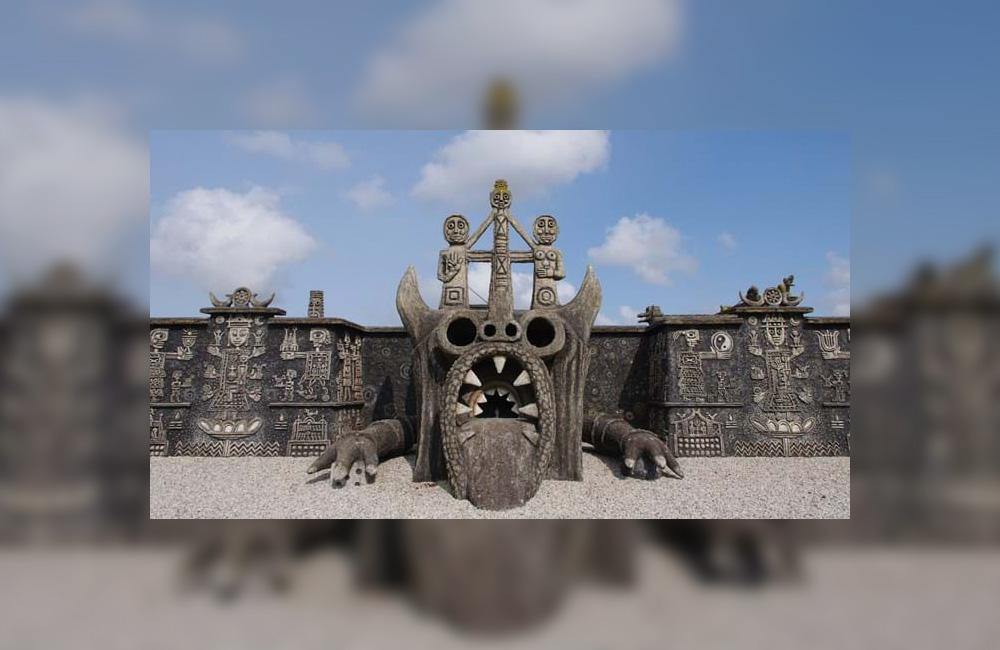First published: Fall 2000
In what is perhaps the earliest surviving example of symbolism, the cave painters of the Upper Palaeolithic period drew geometrical patterns, thought to represent man and woman, at the Lascaux and the Chauvet caves in present-day France.
Some 25,000 years later, at a ruined country house at the edge of the Mayenne woods near Laval, a French artist named Robert Tatin constructed a courtyard of totems and temples, decorated with the ancient Chinese symbols of Yin and Yang, and covered with interlacing geometric representations of woman and man, the moon and the sun. Robert Tatin bought the house, the Frénouse, near the small town of Cossé-le-Vivien in 1962.
Rich in history, part of its stonework dates from the sixth century, while stone axes from the Neolithic period had been discovered in the fields nearby. Over a period of twenty-one years, with the assistance of his fifth wife, Lise, Robert Tatin created a magical cement fortress, where goddesses, dragons, snakes and fairies dance among bas-reliefs of ancient Chinese and Breton symbols, celebrating man’s union with nature and the cyclical passage of time.

The approach to the house and museum is flanked by wide-eyed, totemic figures. Guarding the 80-metre-long Avenue of Giants are nineteen statues representing Tatin’s historic and artistic family, from Joan of Arc to Alfred Jarry. Next to the Avenue of Giants is The Gateway of the Giants, a homage to some of the father-figures of western art: Leonardo da Vinci, Rembrandt, Delacroix, Goya, and Van Gogh.
The story told by this company of giants also traces the development of the artist’s own life, from his first history lessons, to his professional career, personified by a top-hatted carpenter, to the artists who influenced him, pointing finally to his own grave. Once inside the museum, however, the linear structure is abandoned.
Over a surface of 1,200 square metres, the artist has created a miniature universe, incorporating the sun, moon, and sea. Consisting of three main temple-like structures, reflected in a cross-shaped pond, the courtyard and adjoining house are articulated on an east-west axis. Facing the entrance is the towering Notre-Dame-Tout-le-Monde, to the east is The Gateway of the Sun, and to the west The Gateway of the Moon.
The journey through the museum follows the direction of the earth’s rotation, guided by statues around the central pool indicating the successive months of the year. Tatin’s paintings, sculptures, ceramics and tapestries are displayed in adjoining rooms.
This is an article extract; read the full article in Raw Vision #32




